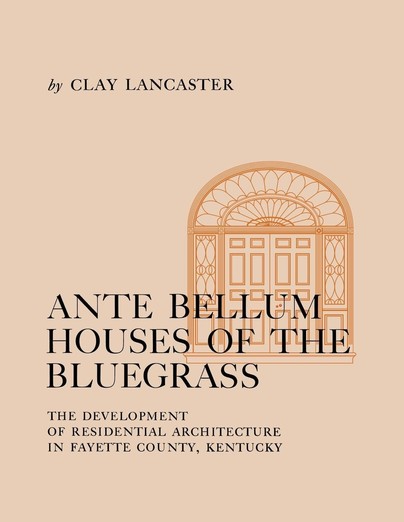Google Books previews are unavailable because you have chosen to turn off third party cookies for enhanced content. Visit our cookies page to review your cookie settings.
Ante Bellum Houses of the Bluegrass (Paperback)
The Development of Residential Architecture in Fayette County, Kentucky
Imprint: University Press of Kentucky
Pages: 200
Illustrations: Illus
ISBN: 9780813155739
Published: 15th July 2014
Script Academic & Professional
Pages: 200
Illustrations: Illus
ISBN: 9780813155739
Published: 15th July 2014
Script Academic & Professional
This book will be reprinted and your order will be released in due course.
You'll be £32.00 closer to your next £10.00 credit when you purchase Ante Bellum Houses of the Bluegrass. What's this?
+£4.99 UK Delivery or free UK delivery if order is over £40
(click here for international delivery rates)
Need a currency converter? Check XE.com for live rates
(click here for international delivery rates)
Need a currency converter? Check XE.com for live rates
The ante bellum homes of Lexington and Fayette County, Kentucky, are both more numerous and more distinctive in design than those of many communities of similar age. Founded in 1775, Lexington by the turn of the century had become the chief cultural center north of New Orleans and west of the Alleghenies. During the eight decades between the Revolution and the Civil War, Fayette County was the focus of converging streams of immigration, and a phenomenal amount of building activity took place in Lexington and the surrounding area. Although local builders followed the trends of national architecture, they were not primarily concerned with "correctness," and developed a provincial style which was distinguished by originality and a high level of craftsmanship.
In Ante Bellum Houses of the Bluegrass, Clay Lancaster seeks to define the indigenous character of Fayette County building, which he concludes is of unusually distinguished quality. A second aim is the presentation of authentic data as a guide for intelligent restoration of existing old buildings, many of which have been defaced by unnecessary changes and inappropriate additions. He traces the development of house building in this restricted area from the first crude log cabins, through frame, stone, and early brick residences, to the substantial homes built by wealthy landowners and merchants in the mid-nineteenth century.
The text is supplemented by 200 line drawings which present the essential features of each building free from the later alterations and decay which would be recorded by the camera. These illustrations have been compiled on the basis of intensive research, from old photographs, maps, drawings, and other records. An album of halftone illustrations, many of which are reproductions of old photographs of buildings which have been altered or demolished, supplements these illustrations.
Other titles in University Press of Kentucky...















